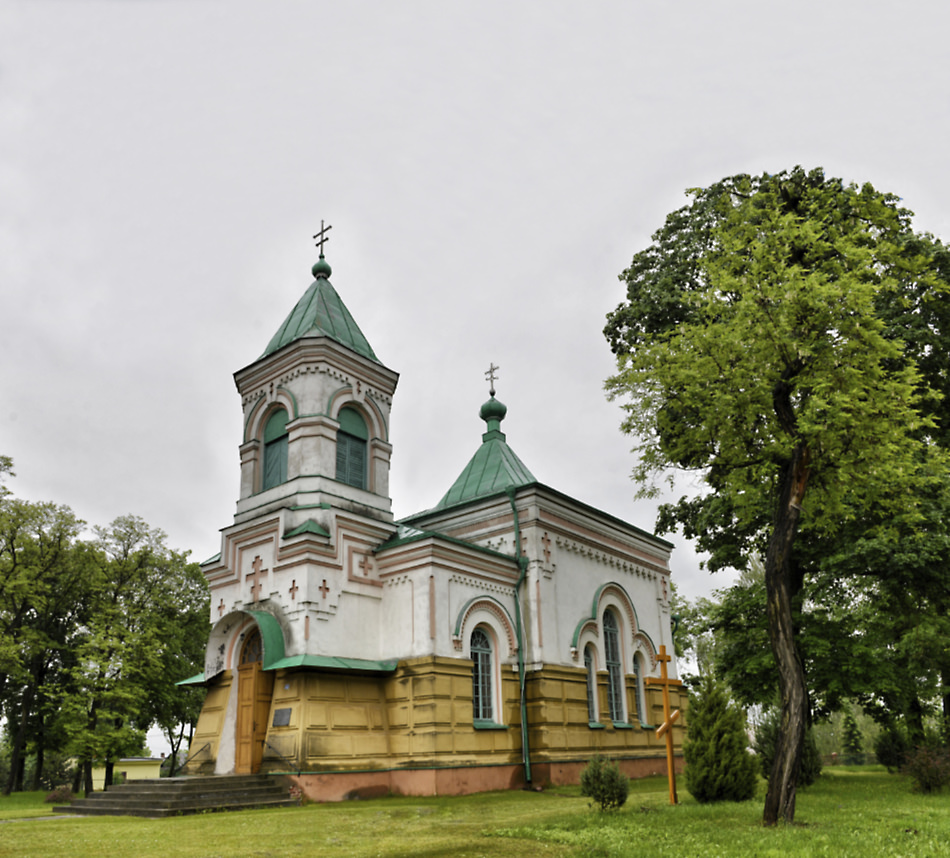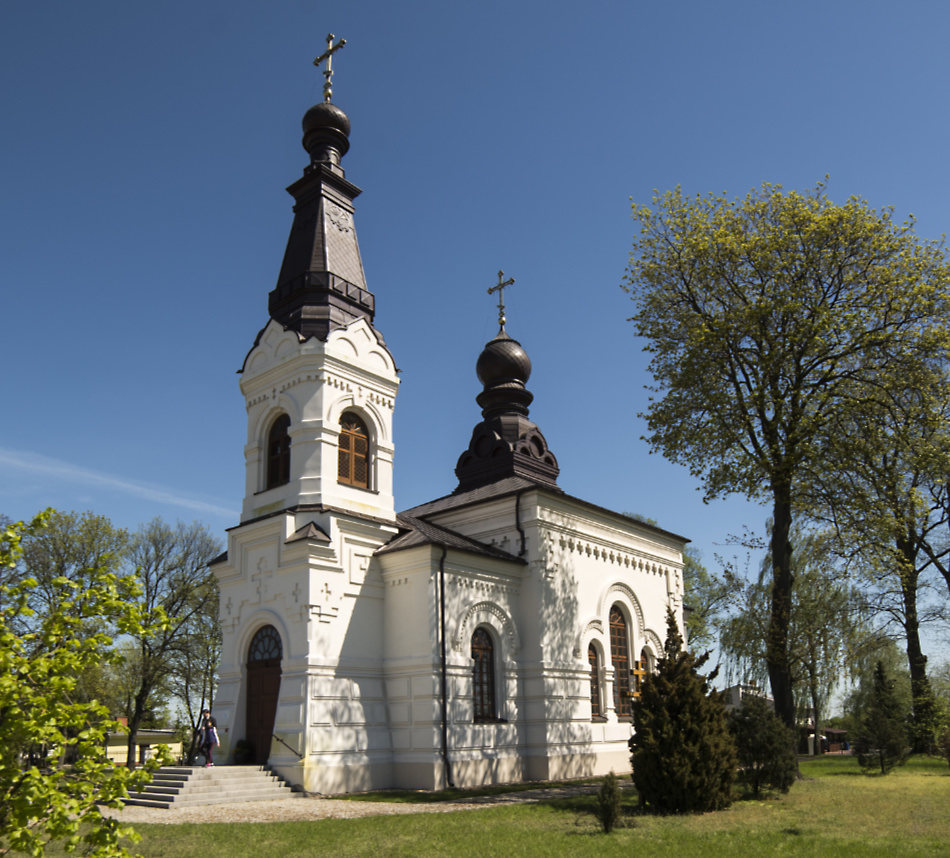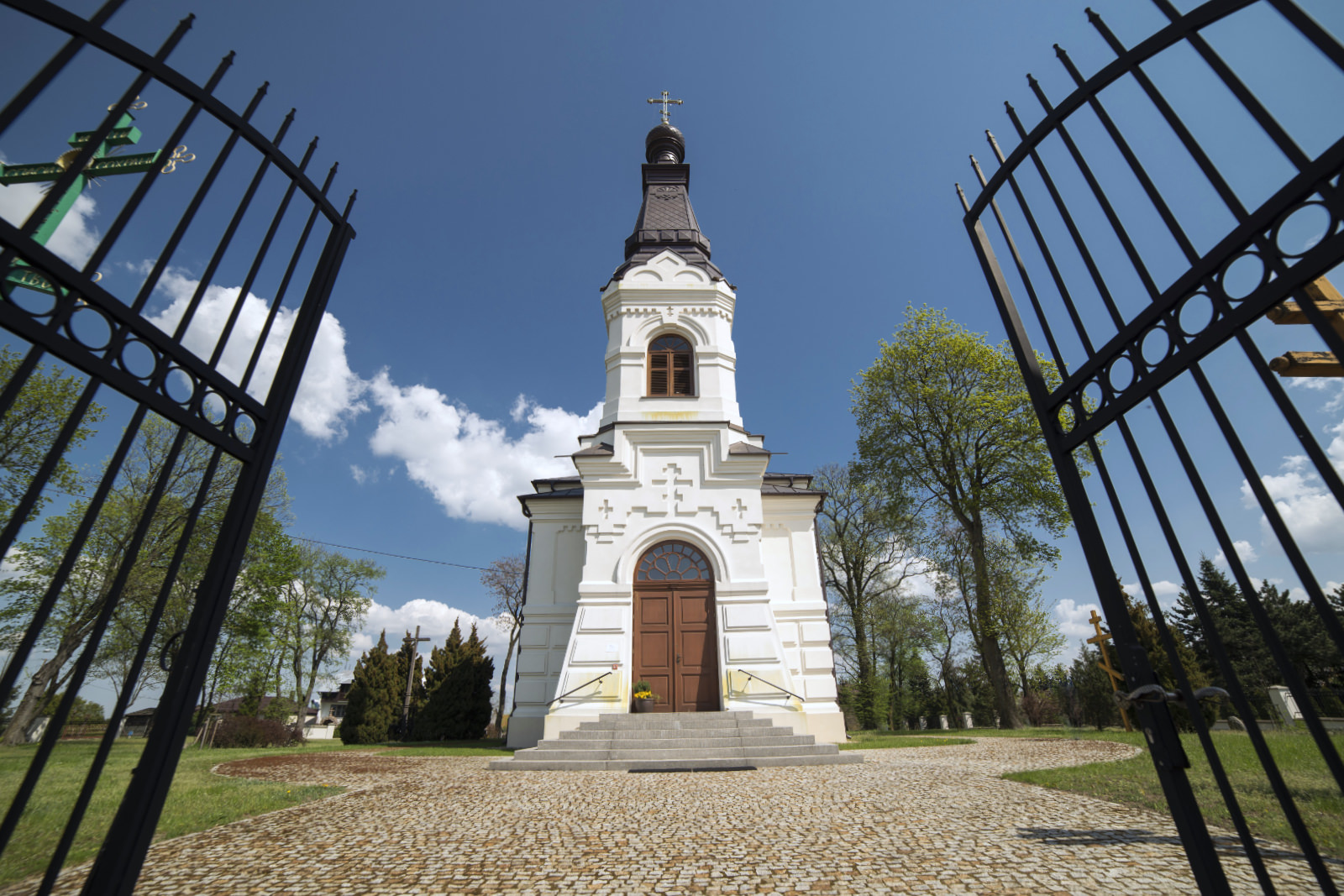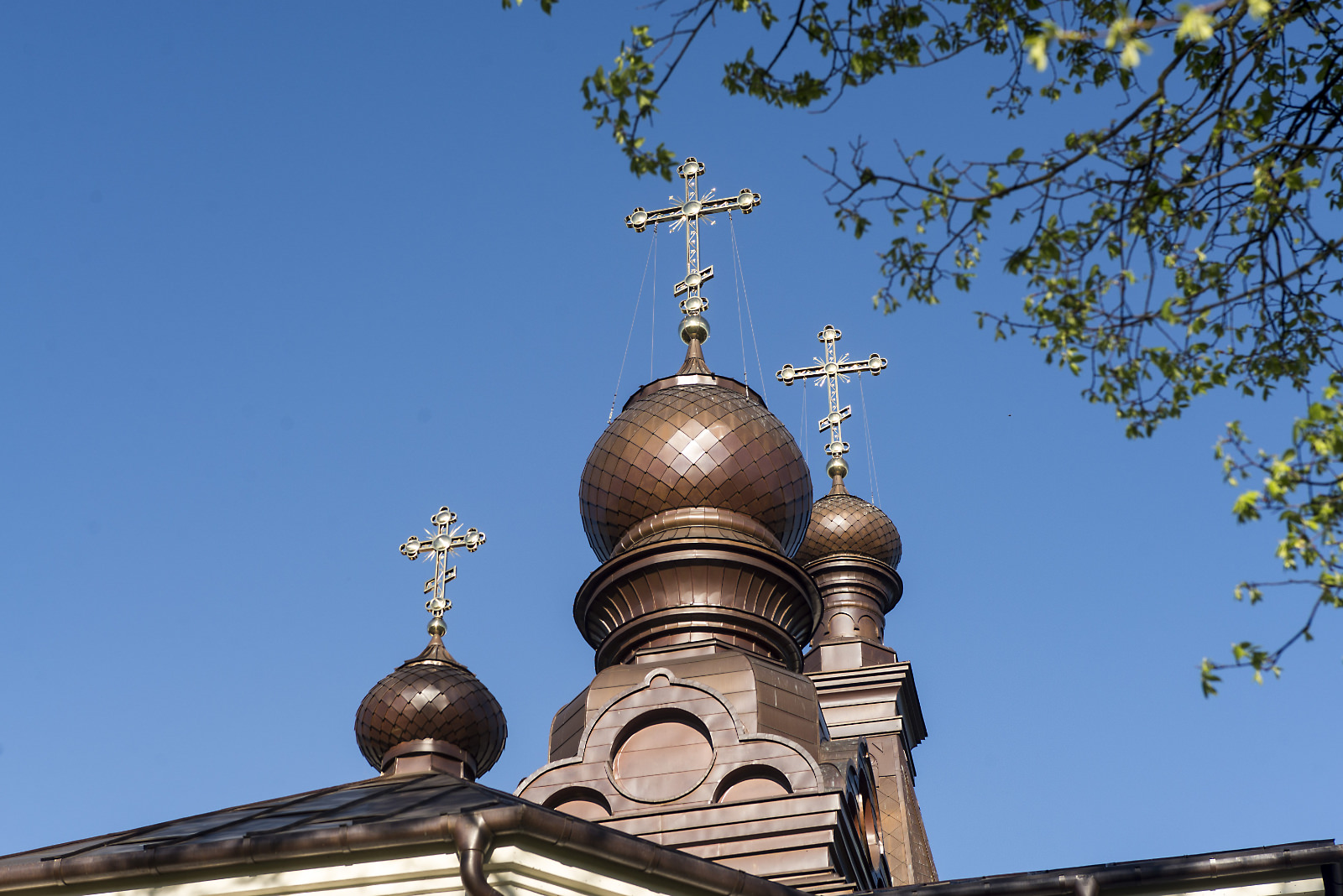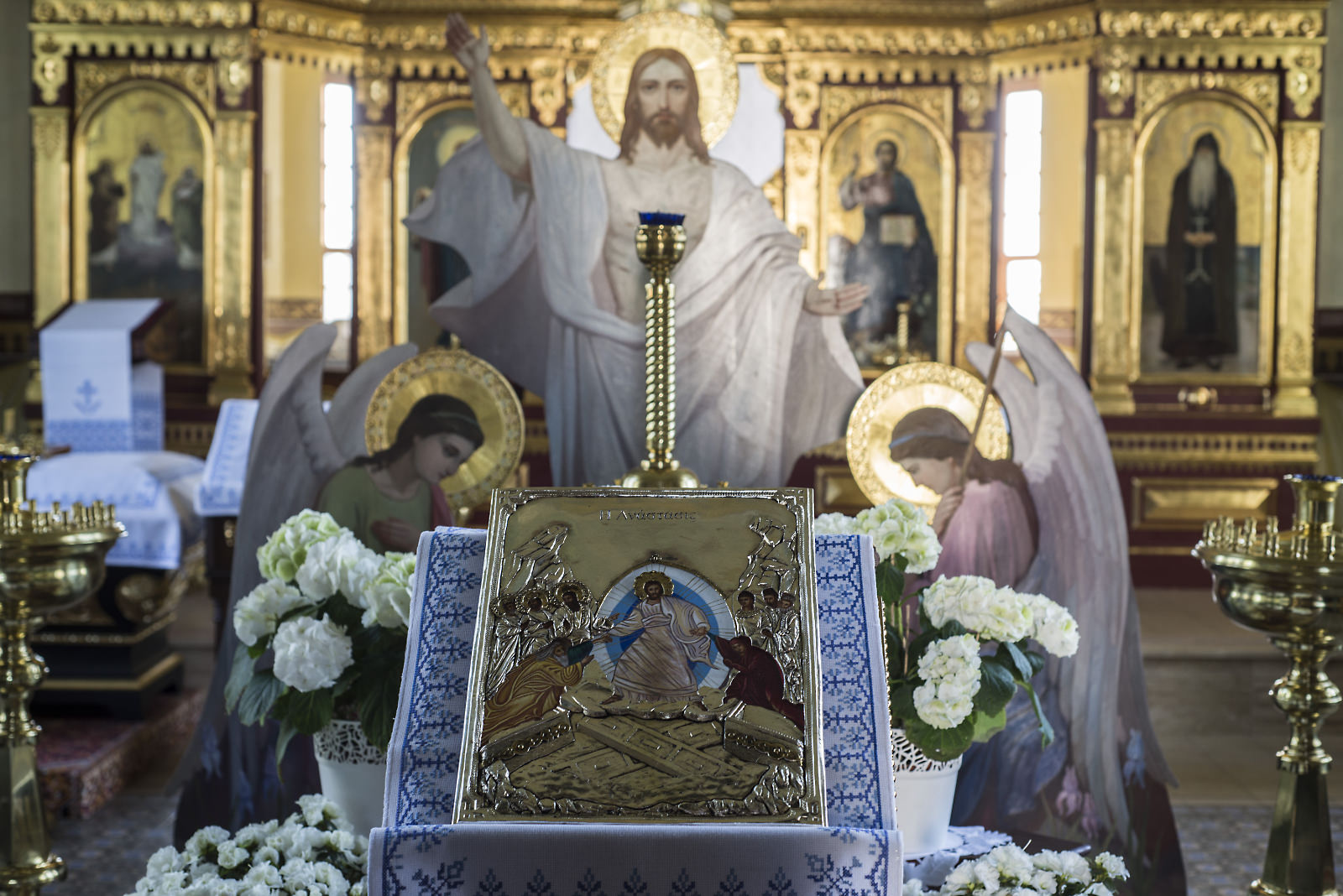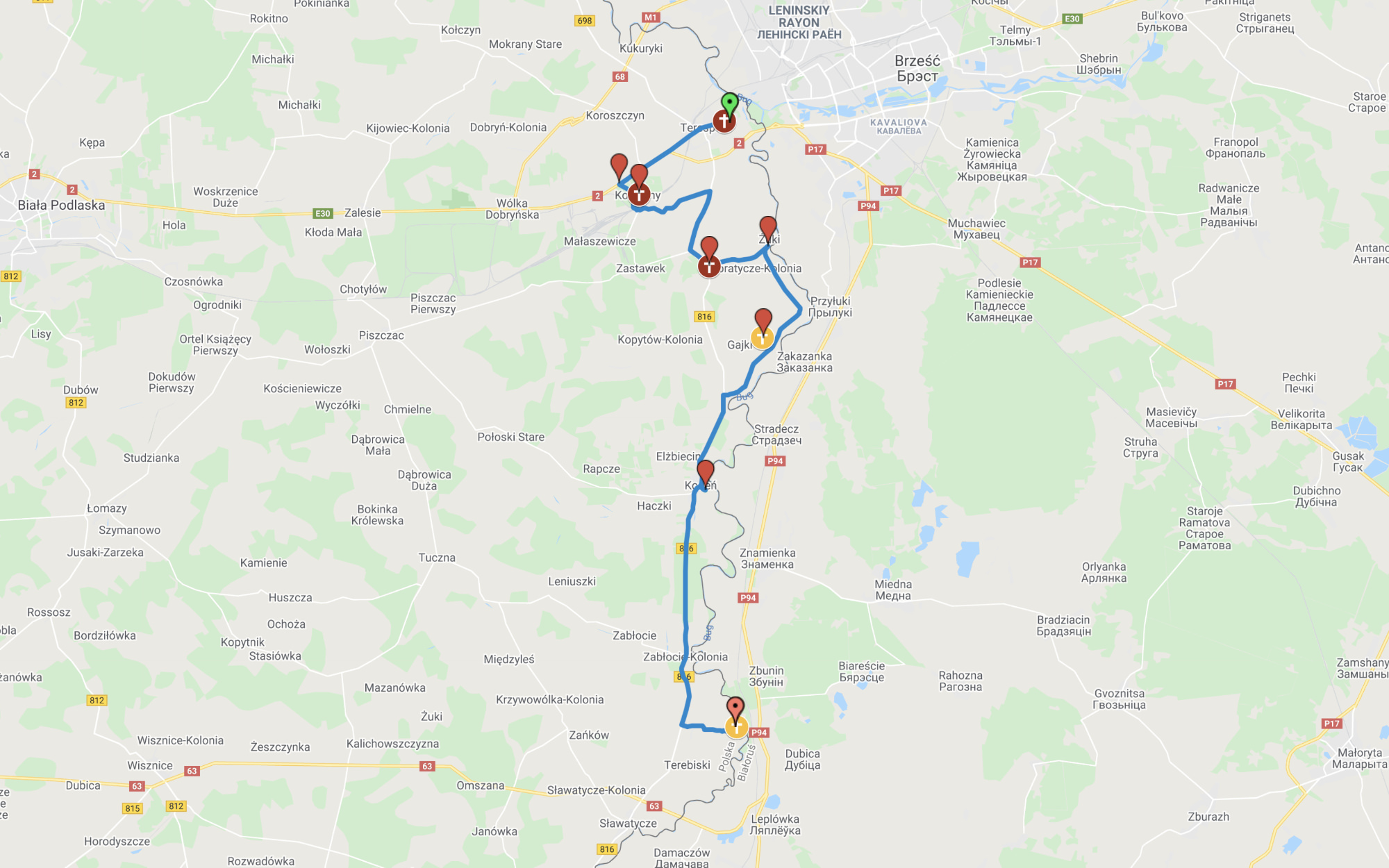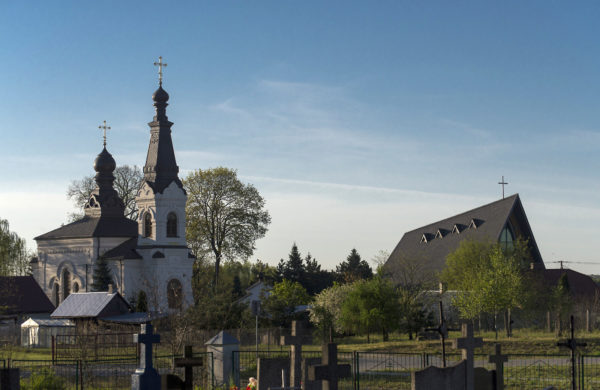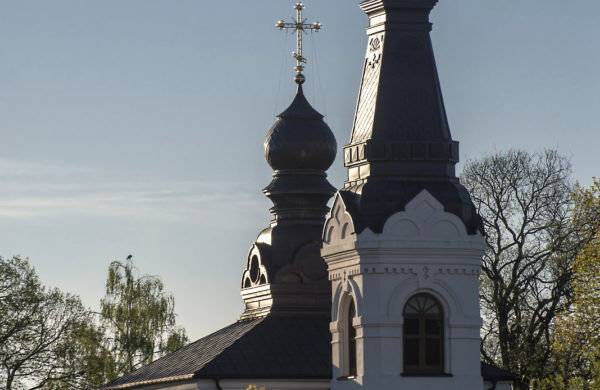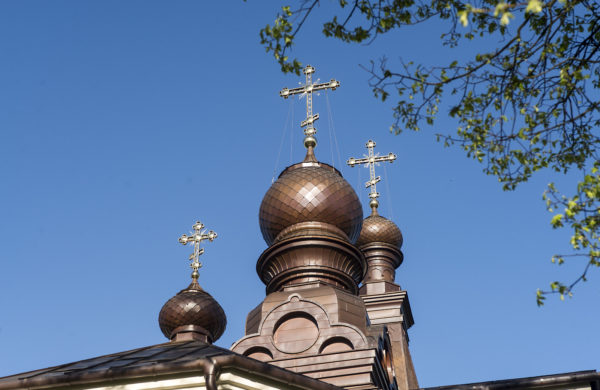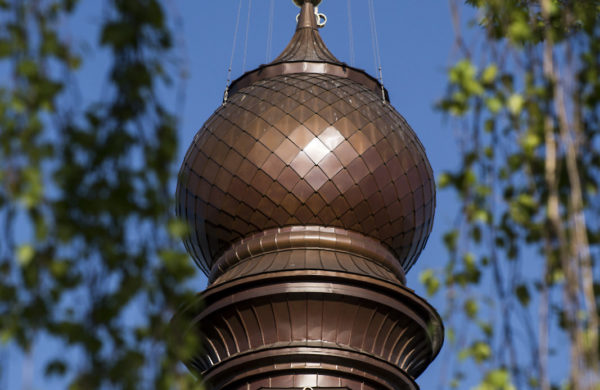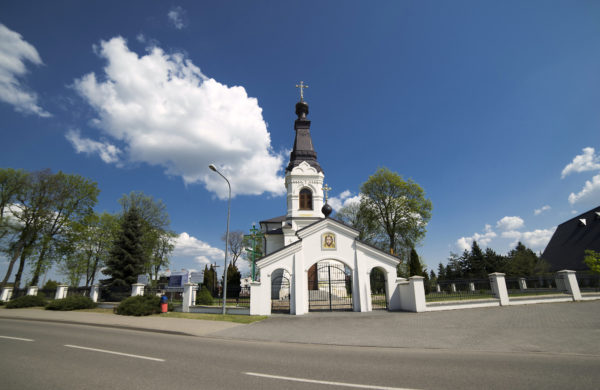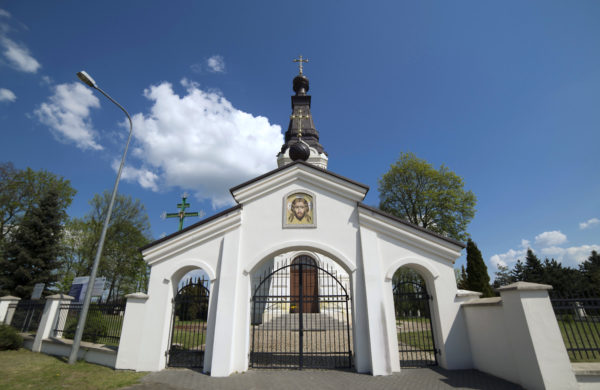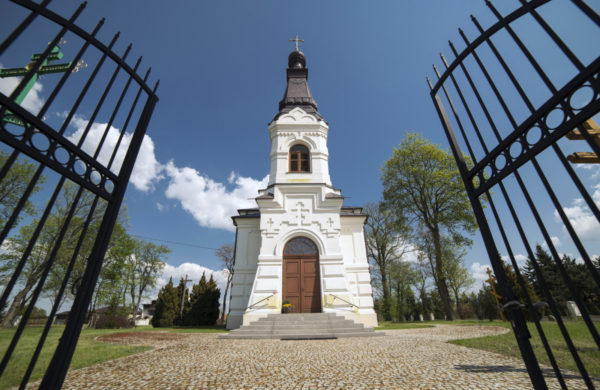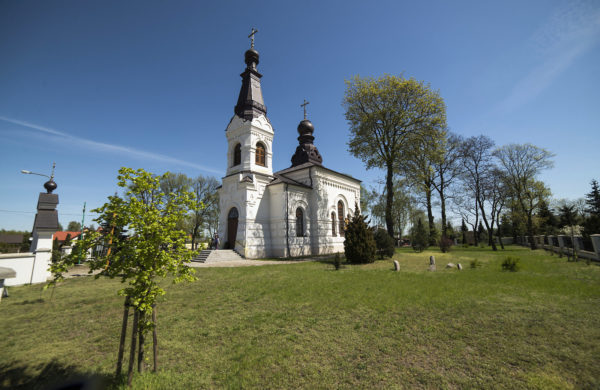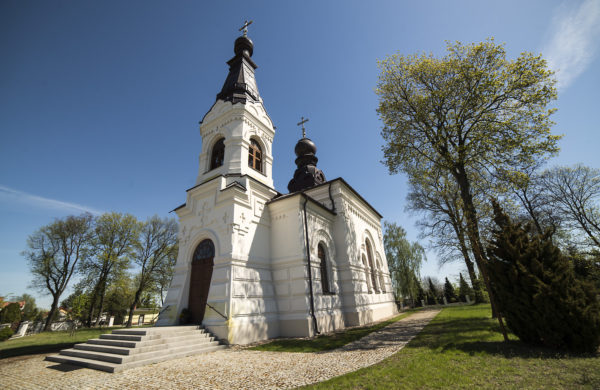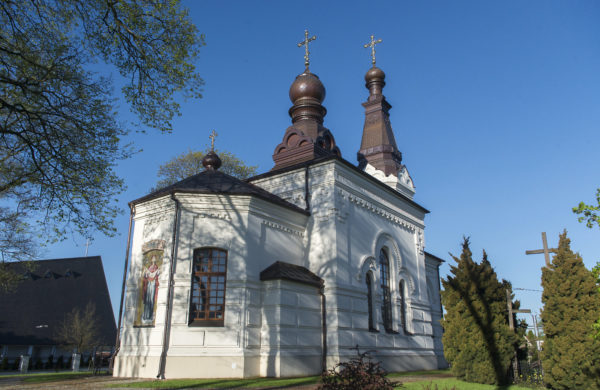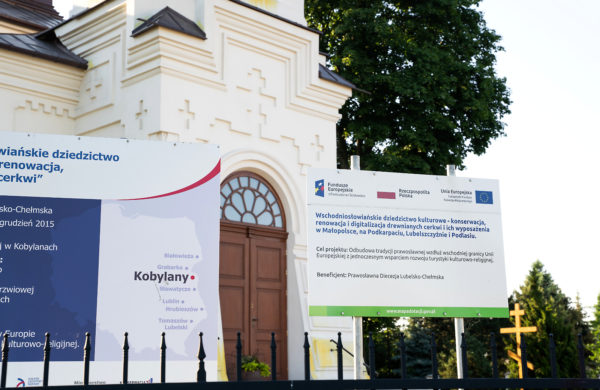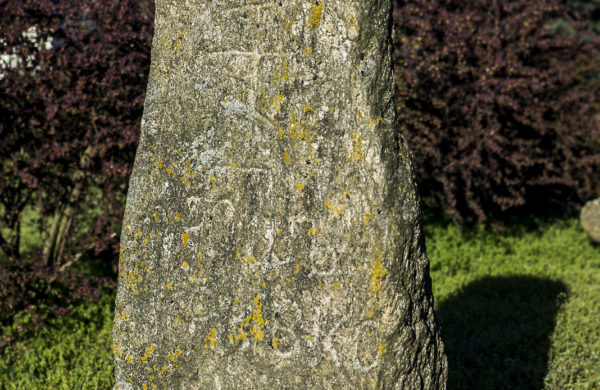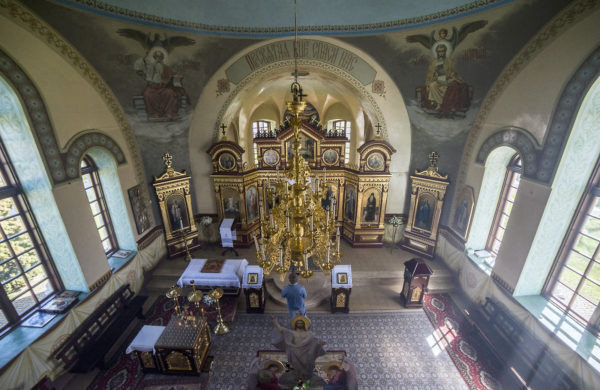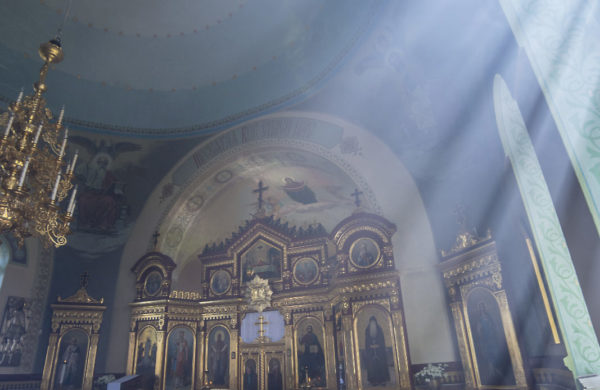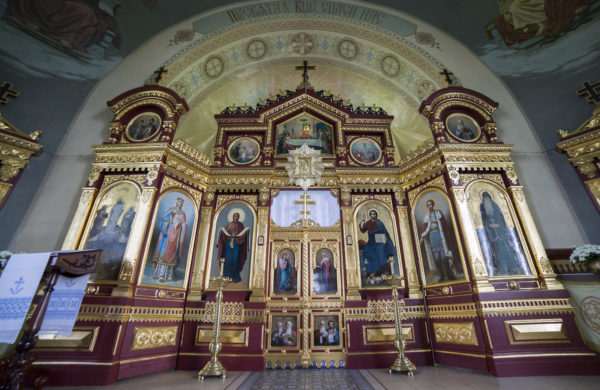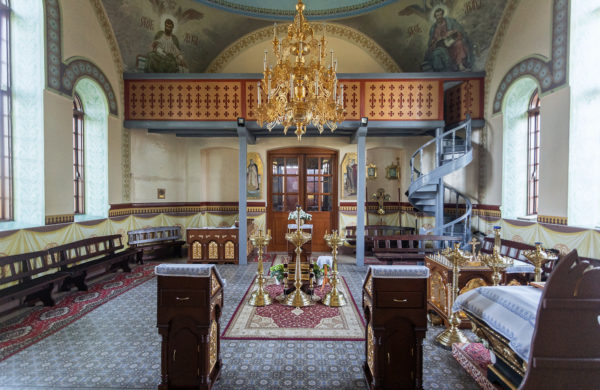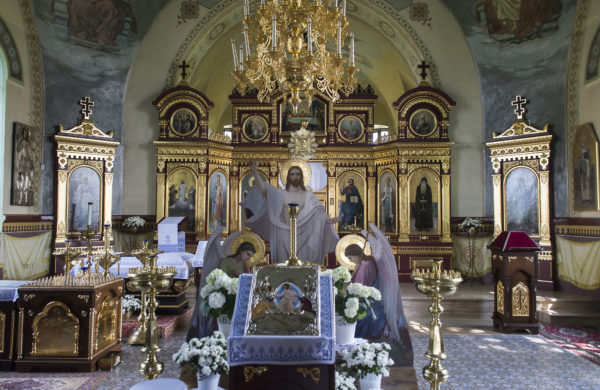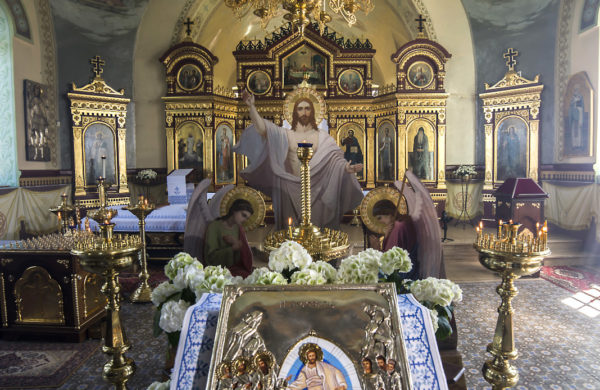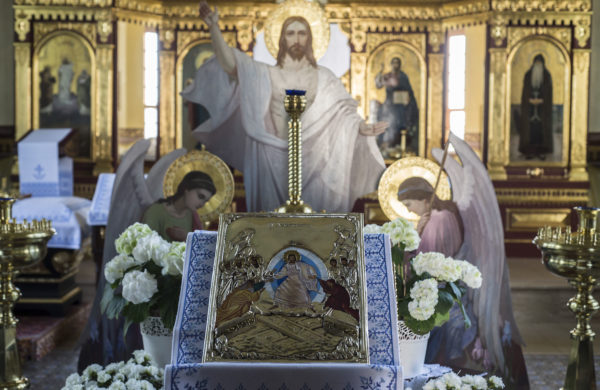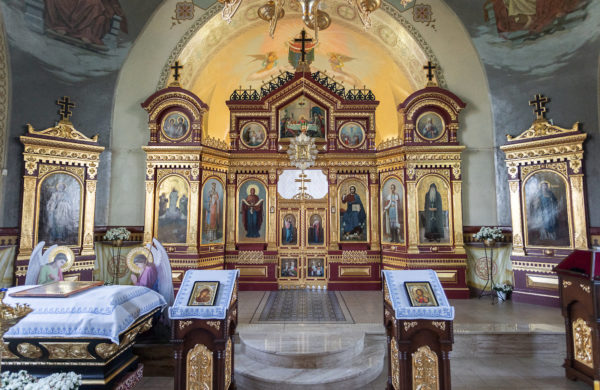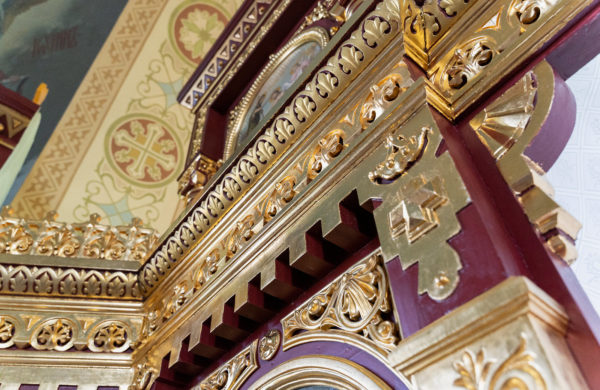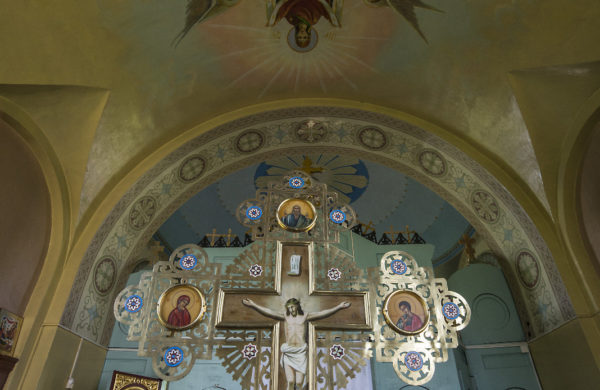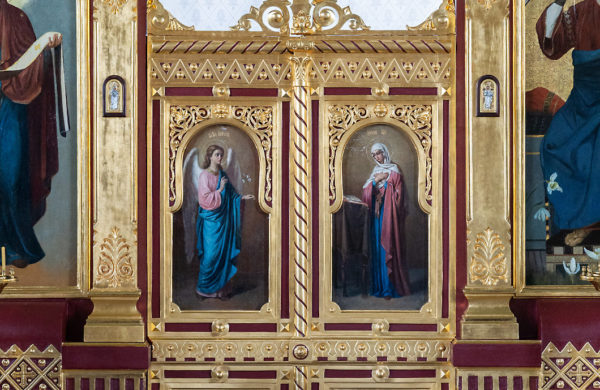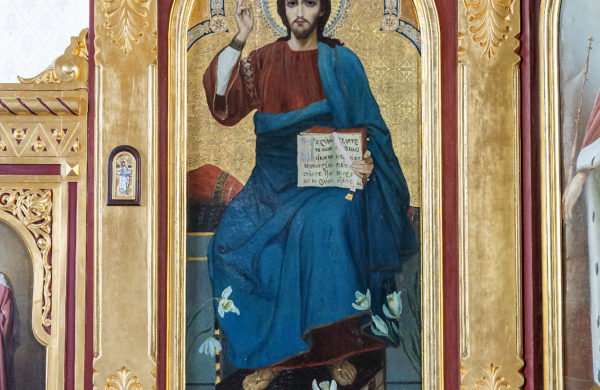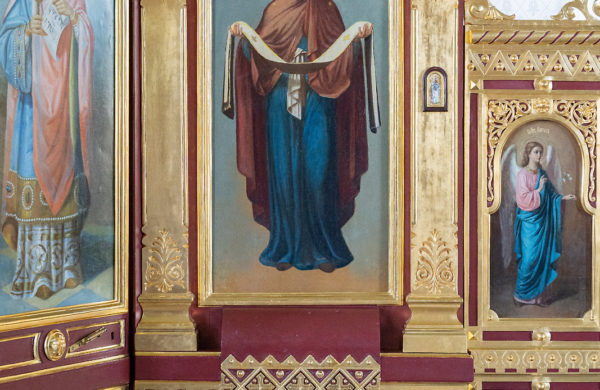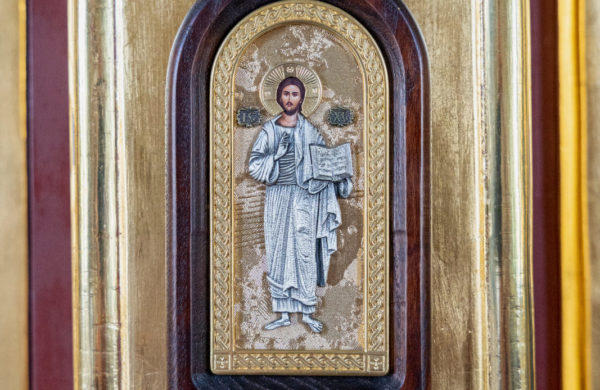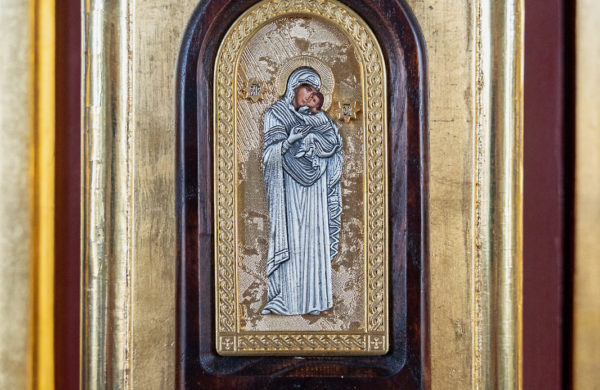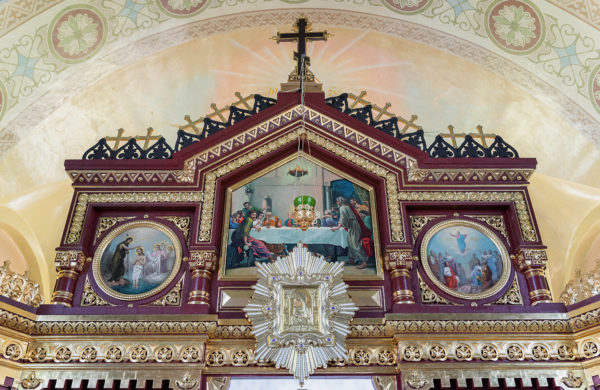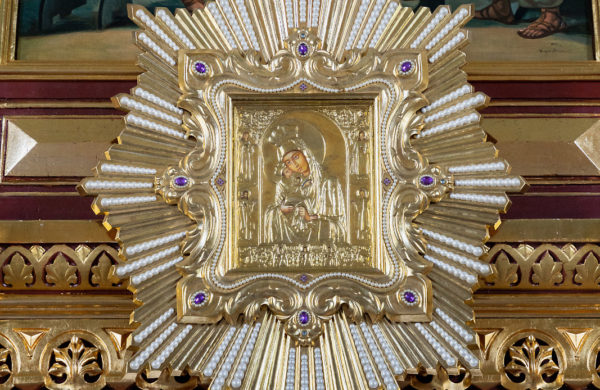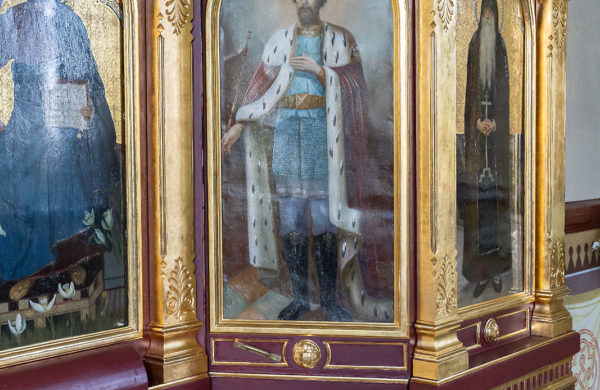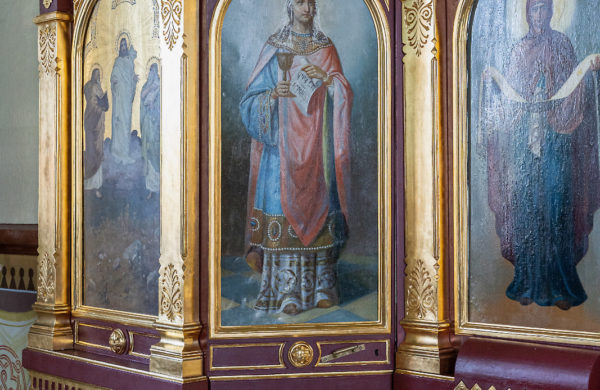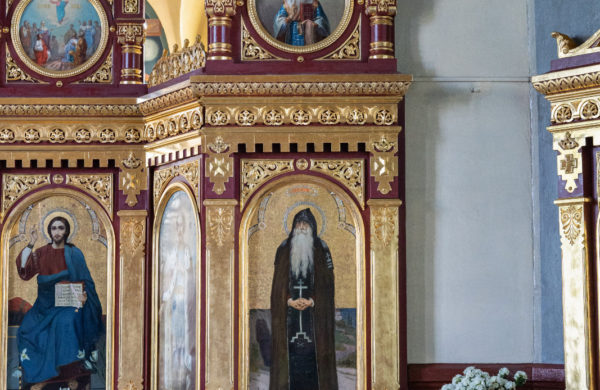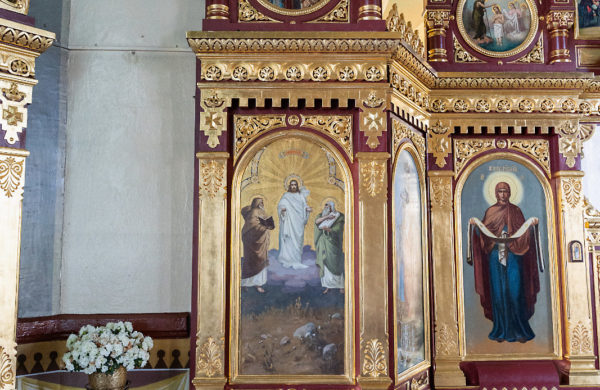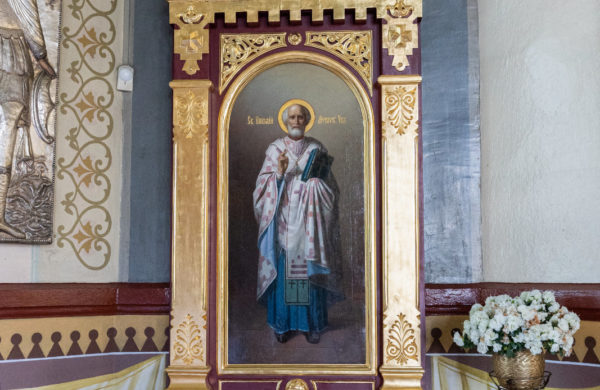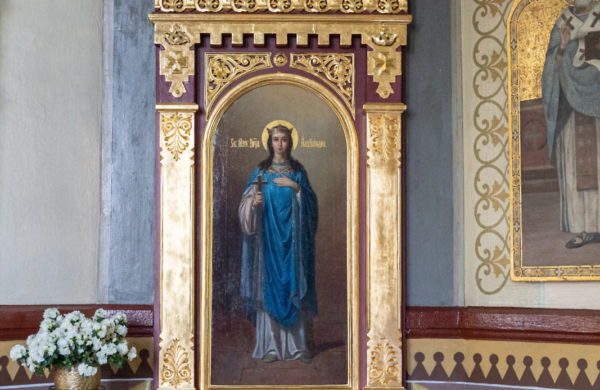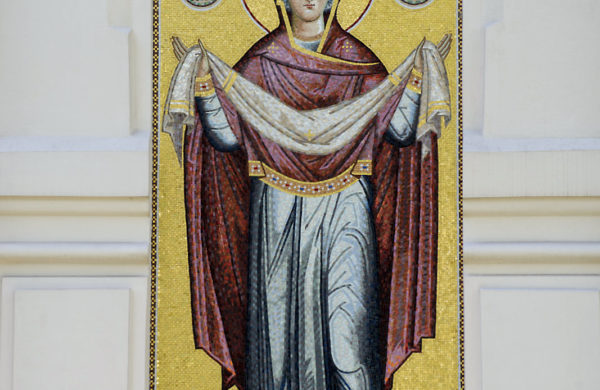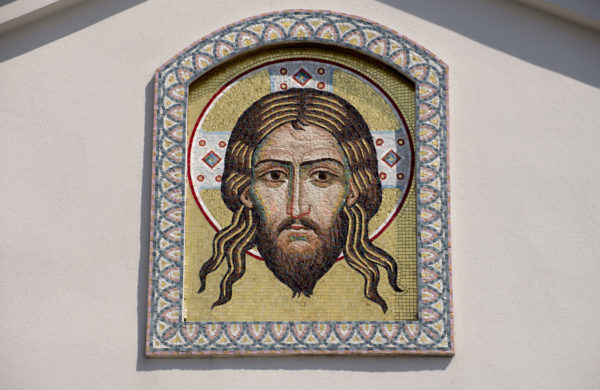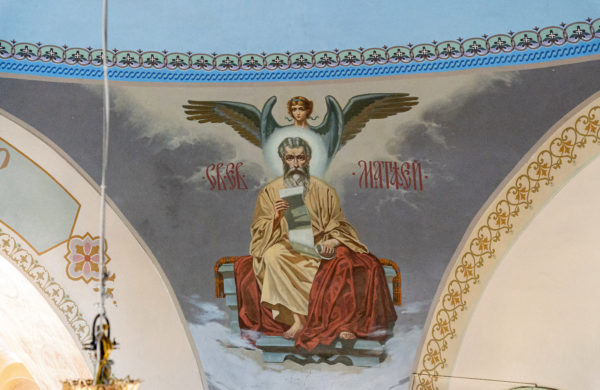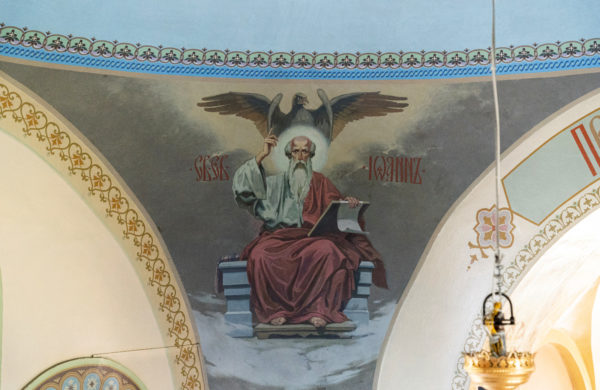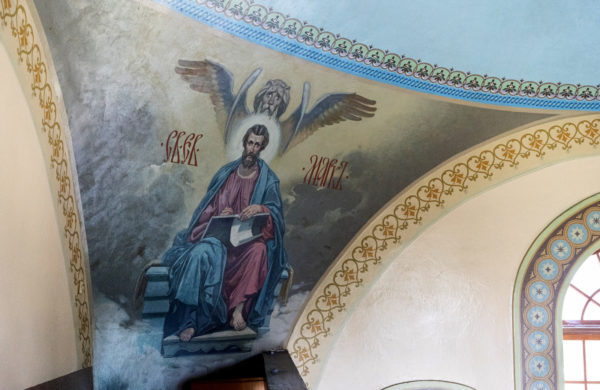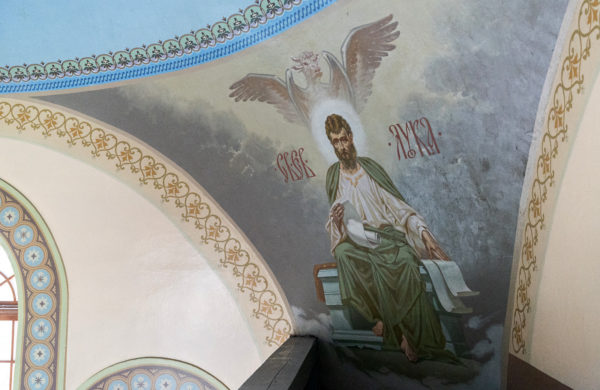Church of the Covering Veil of Mary the Theotokos
Locality
The Orthodox church of the Covering Veil of the Theotokos in Kobylany is a parish church. It belongs to the Terespol deanery of the Orthodox Diocese of Lublin-Chelm. It is located about 130 km from Lublin.
History
The oldest Orthodox temple in Kobylany is dated to 1519. The present church of the in Kobylany was consecrated in 1890 and operates continuously to this day.
Monumental
The church was built in the Neo-Russian style. It is an orientated, tripartite temple with monumental architecture, which is emphasized by the plastic rustication of the plinth zone and decorative cornices.
A unique element in the church of the Covering Veil of the Theotokos in Kobylany is a double pritwor, as well as a mosaic with the image of the Theotokos, located on the outer wall of the presbytery.
Virtual tour
We have prepared some practical multimedia materials, which we hope will bring closer to these beautiful historic Polish Orthodox churches. Watching an introductory video with comments from the guide and spiritual guardian of the temple, decorated with moody Church chants, you can emphasize with its atmosphere. Going on a virtual tour, which includes 360 panoramic photos, you can quite imagine yourself inside the temple. For active tourists we have prepared a proposal for a cycling route. We invite you to a virtual tour of the orthodox church, and in the future to visit it in person.
Introduction
The first mention of the Orthodox church in Kobylany comes from 1519, and about the parish that was part of the Diocese of Chelm from 1534.
For nearly a quarter of a century, the parish of Kobylany resisted the adoption of the tragic decisions of the Union of Brest from 1596,
however, in 1620, like other Orthodox parishes in these areas, it had to switch to the Union. The Union of Brest in 1596, on the basis of which this so-called Uniate Church was founded, became one of the most tragic events in the Kingdom of Poland.
In the unanimous opinion of historians, and above all professor Antoni Mironowicz, the Brest Union became the source of all conflicts on the historical and national background,
and also spiritual. As a result of these conflicts, the Polish State weakened and two centuries later this situation led to the loss of independence by our Commonwelth.
In 1875, the parish in Kobylany returned to the bosom of Orthodoxy. In the same year, an Orthodox cemetery was created in the vicinity of the church.
History of the Church
In 1890, the construction of a new, monumental, brick church was completed, which stood in place of the old, wooden one. On September 25 of that year, it was ordained by the then bishop of Lublin, Flawian. The author of the design of the new building was Viktor Sychugov, a member of the Imperial Academy of Fine Arts in St. Petersburg, who for the needs of the Orthodox Diocese of Warsaw developed as many as eleven projects of temples.
The artistry of the architect and its builders is evidenced by acoustic, the one in the church in Kobylany is unique.
At the end of the nineteenth century, the Orthodox Parish in Kobylany had 1300 faithful. In 1915, the inhabitants of Kobylany were on the evacuation list, but eventually officials , the priest and teir families went to the refuge,
In 1919, in already independent Poland, the church was registered as the seat of the Orthodox parish. Despite this, in 1927 the followers of the then spreading union wanted to take it over.
However, the parishioners were adamant and the temple remained Orthodox, and so it is to this day.
In 1938, a tragic action of demolishing churches in the Chełm region and Southern Podlasie took place.
In the church in Kobylany found shelter equipment of some of them, including thie icon of St. Nicholaus from the church in Kijowiec.
Architecture
The orthodox church in Kobylany was built in the Neo-Russian style. It is an orientated temple, tripartite. In order to increase the impression of monumentalism, its architect introduced plastic rustication of the plinth zone and decorative cornices. The nave erected on a square plan is covered with a four-bay roof, which is crowned with an onion dome. On the eastern side there is a chancel closed polygonally, and from the west porch, above which rises a bell tower covered with a tent roof, finished with an onion dome. The walls inside the church are decorated with ornamental and figural polychrome with images of the four Evangelists.
Attention is drawn to the two-row eleventh-century iconostasis. In 1997, the Orthodox church in Kobylany was entered into the register of monuments.
Attention is drawn to
Particularly noteworthy in the church in Kobylany deserve frescoes of four Evangelists, which until now were under a thick layer of paint.
An interesting fact is the double pritwor, or vestibule, rarely found in other churches.
The mosaic of the Theotokos on the outer wall of the presbytery is also unique.
Virtual tour
Here is a proposal for a cycling route for active tourists. To use it, download the file to your computer, by clicking the button on the left, unzip it, load the .gpx file on any GPS device for navigation… and off you go. We wish you a successful and fruitful journey.
Renovation
At the end of the twentieth century, after many renovations and reconstructions, the church did not resemble the original.
In 2014, a general renovation of the church began. After two years, its former splendor and shape were restored.
In 2017, the Provincial Conservator of Monuments in Lublin awarded the parish in Kobylany the Conservation Laurel for the renovation.
The finale of the works was the restoration of the iconostasis from the nineteenth century, in which there are even older icons, coming from the church in Kijowiec, demolished in 1938.
